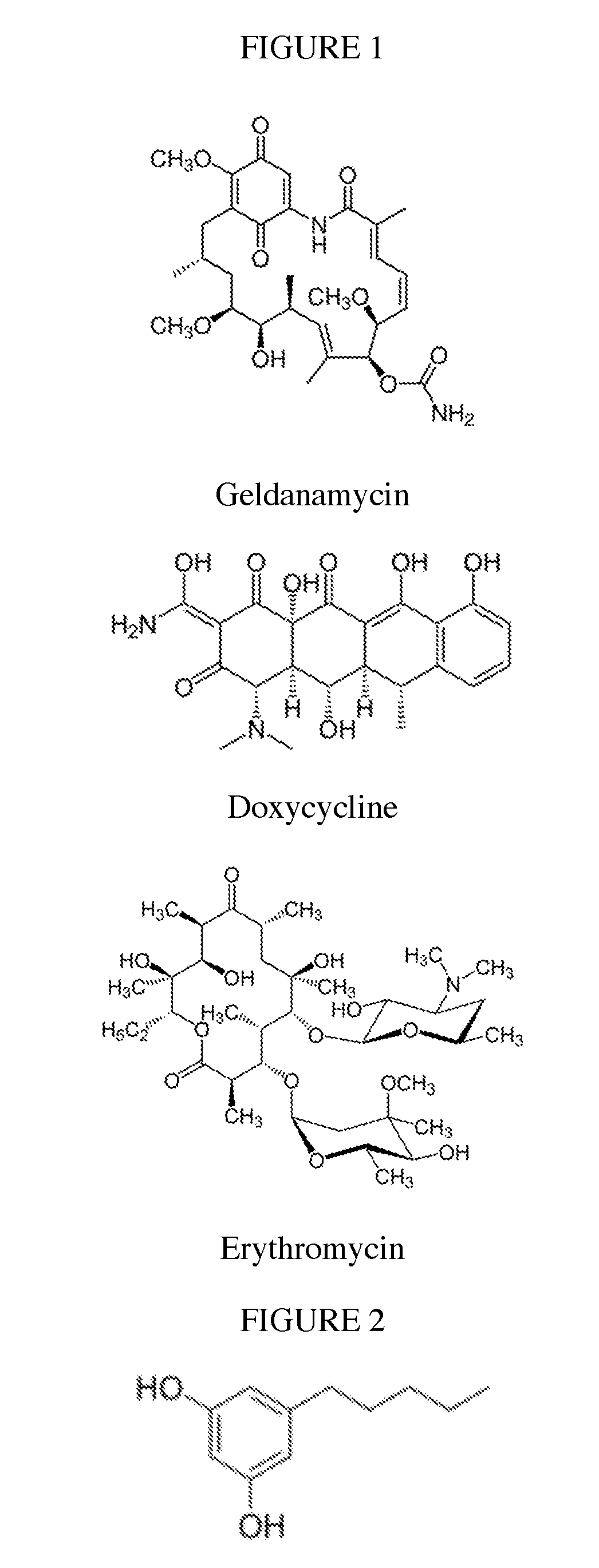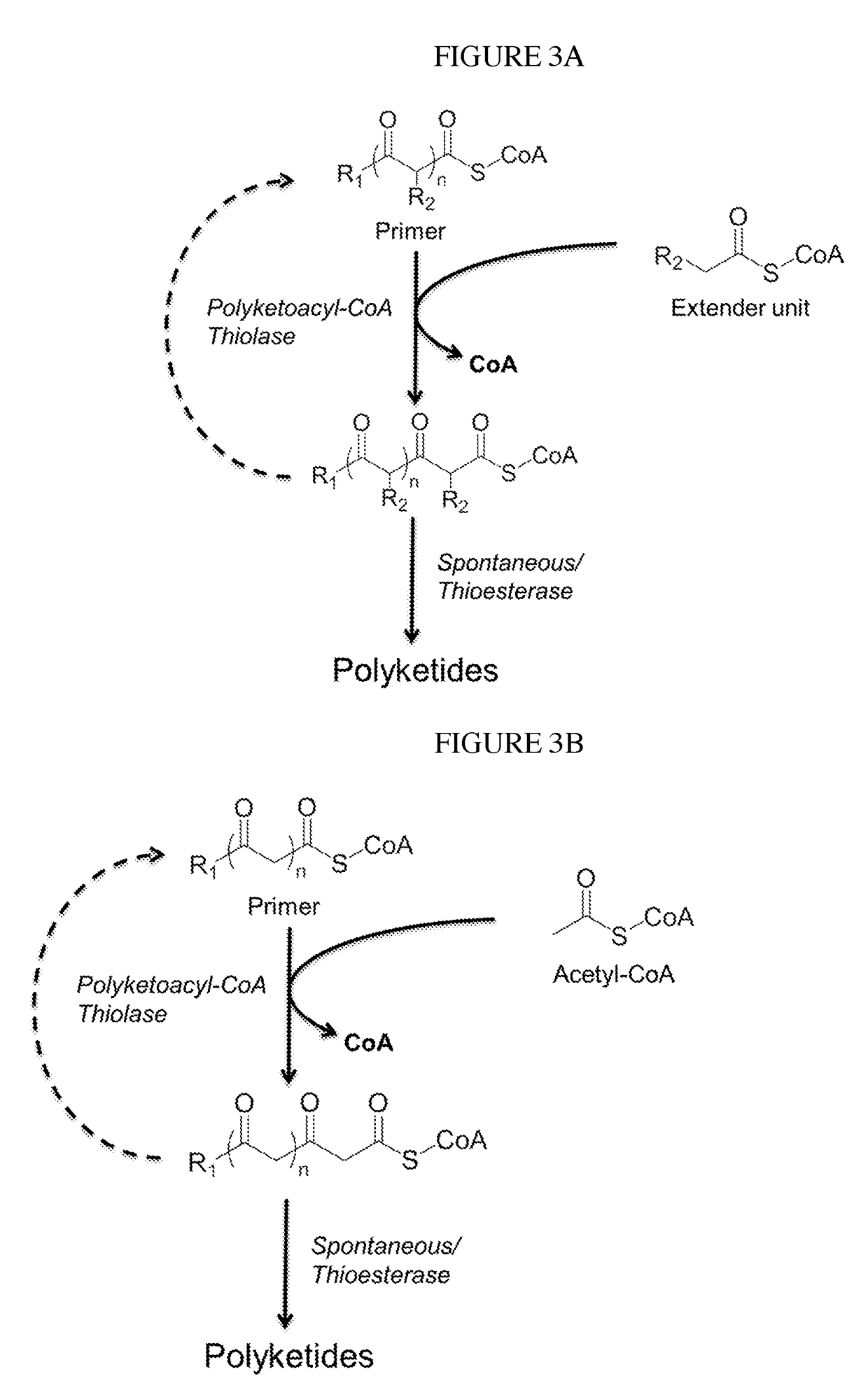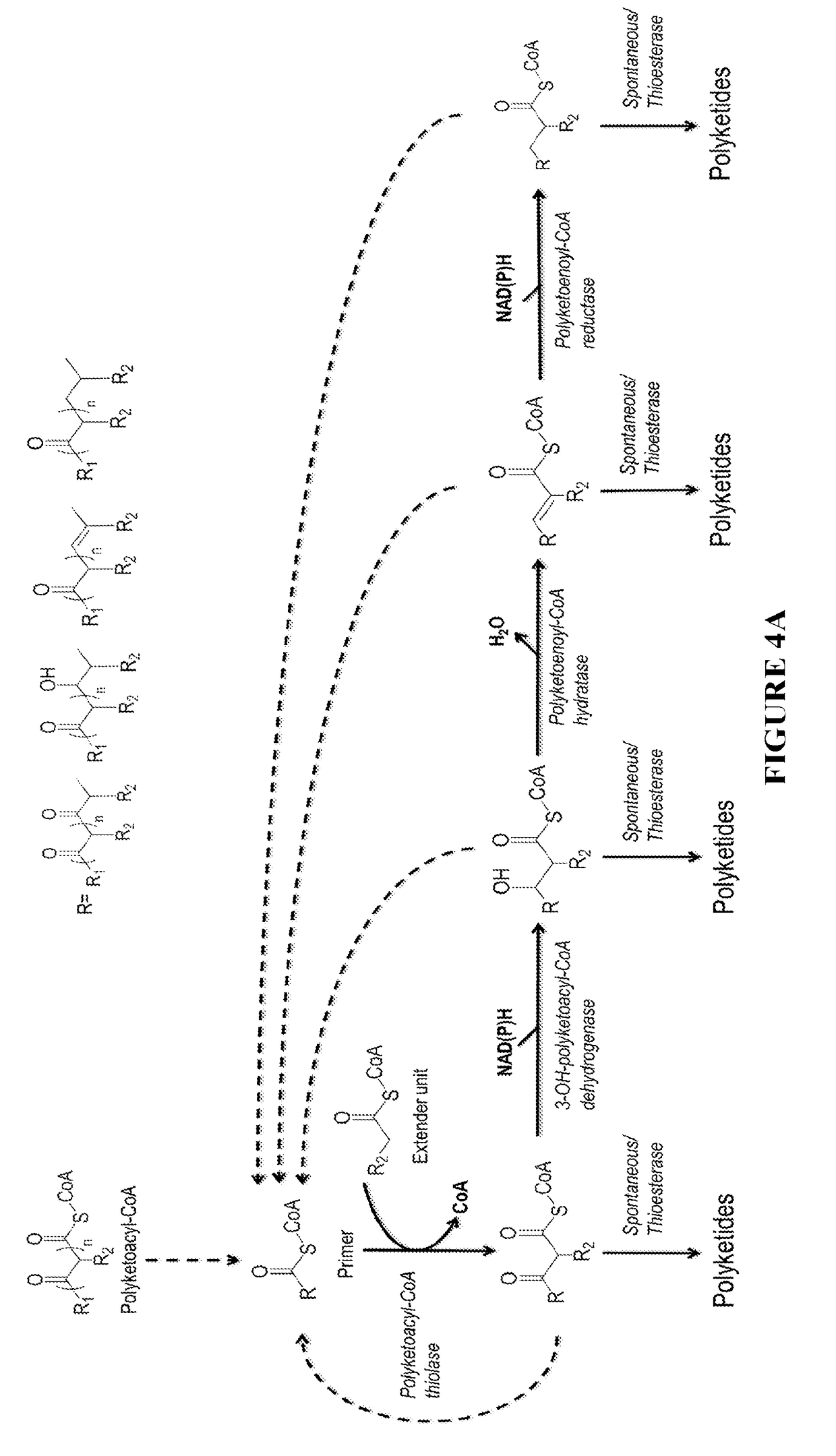Biosynthesis of polyketides
a polyketide and biosynthesis technology, applied in the direction of acyltransferases, enzymology, transferases, etc., can solve the problems of limiting the energy efficiency of these pathways, restricting the range of extender units, and limiting the diversity of products that can be generated through these carbon chain elongation pathways. , to achieve the effect of better functionality
- Summary
- Abstract
- Description
- Claims
- Application Information
AI Technical Summary
Benefits of technology
Problems solved by technology
Method used
Image
Examples
Embodiment Construction
[0097]This disclosure generally relates to the use of microorganisms to make functionalized polyketides through polyketoacyl-CoA thiolase-catalyzed non-decarboxylative Claisen condensation reactions instead of decarboxylative Claisen condensation reactions catalyzed by polyketide synthases. Native or engineered polyketoacyl-CoA thiolases catalyze the non-decarboxylative Claisen condensation in an iterative manner (i.e. multiple rounds) between either unsubstituted or functionalized ketoacyl-CoAs (and polyketoacyl-CoAs) as primers and acetyl-CoA as extender unit to generate (and elongate) polyketoacyl-CoAs.
[0098]If desired, the β-keto group of the polyketide chain of polyketoacyl-CoA can be reduced and modified step-wise by 3-OH-polyketoacyl-CoA dehydrogenase or polyketoenoyl-CoA hydratase or polyketoacyl-CoA reductase. Dehydrogenase converts the β-keto group to (β-hydroxy group. Hydratase converts the (β-hydroxy group to α-β-double-bond. Reductase converts the α-β-double-bond to sin...
PUM
| Property | Measurement | Unit |
|---|---|---|
| retention time | aaaaa | aaaaa |
| pH | aaaaa | aaaaa |
| pH | aaaaa | aaaaa |
Abstract
Description
Claims
Application Information
 Login to View More
Login to View More - R&D
- Intellectual Property
- Life Sciences
- Materials
- Tech Scout
- Unparalleled Data Quality
- Higher Quality Content
- 60% Fewer Hallucinations
Browse by: Latest US Patents, China's latest patents, Technical Efficacy Thesaurus, Application Domain, Technology Topic, Popular Technical Reports.
© 2025 PatSnap. All rights reserved.Legal|Privacy policy|Modern Slavery Act Transparency Statement|Sitemap|About US| Contact US: help@patsnap.com



